Of Chardonnay and Hand Sanitizer
Article written and posted by Idaho Wine Commission on Apr 14, 2021 - Read the article on their page here!
You probably wouldn’t imagine going to a winery to pick up hand sanitizer. But if you lived anywhere near Buhl, Idaho in the past year, you just might have done so. For James Holesinsky, owner and winemaker of Holesinsky Vineyard & Winery, the pandemic was a strange twist of fate that converged and comingled both ends of his businesses: making wine and making chemicals (He also owns Clear Lakes Products, which develops innovative dairy and industrial chemicals.)”
Under normal circumstances, never the two shall meet. But unprecedented times call for unprecedented measures.
With a global shortage of sanitizers, James—whose father raised him to be a chemist—saw a need he could help fill. So, at Clear Lakes, they upped production of their hand sanitizers, and at the winery, they set up a drive-through (“Like a coffee shop,” he describes) where it could be distributed safely outside.
“We were making up to 5,000 gallons of hand sanitizer a day,” he remembers, estimating normal production would be around 500 gallons a month. He continues, “We were busy, working 20-hour days, seven days a week. We were all exhausted.”
But the work was rewarding. And necessary. “We gave lots and lots away to senior centers, hospitals, etc.,” he adds.
At the same time, James was helping fulfill another growing need. During the pandemic, the demand for wine and alcohol has skyrocketed nationwide.
And Idaho was no different. It wasn’t long before people were coming to pick up a few of their favorite Holesinsky bottles in addition to their sanitizers. “It was a very peculiar time in our lives,” he recalls.
Liquid chemistry
James' love for chemistry was instilled by his father, whose parents emigrated from Czechoslovakia. He was a biology teacher by trade and a lover of the land. “He was a biologist and practically a horticulturist,” James explains. "But he was also a dreamer.”
Those dreams carried him into many different ventures. He bought 80-acres of land and began farming. “My dad was always on the tractor,” James remembers, “Always doing things out on the property.”
In the 1970s, he tried his hand at dairy farming. “Our business was pretty much liquid chemistry.” James describes. “It was always second nature to me.”
As a young boy, James would run the chemical analyses of the equipment to ensure its cleanliness. “The same kind of system you'd see it like inside a Chobani or any cheese plant,” he says, “We kept all of those squeaky clean and free of bacteria.”
However, dairy farming is hard work, made even harder when you’re small. They found it hard to compete against the larger, better-funded dairy farms and cheese plants. Eventually, they sold the cattle but continued working with the chemicals and supplies you need to clean and sanitize dairy the farming equipment that comes with them.
James came to see chemistry as a means for survival. “I literally started studying chemistry so we could develop and manufacture all of our own chemicals,” James explains.
Through it all, his dad had a lifelong dream of planting grapes. But just keeping all their heads above water was already a full-time job. Dreams are great. But they don’t pay the bills. At least with chemistry, they could make a living.
Survival mode
“How do you pick your career?” James asks. “Sometimes, it has to be pulled out of the sky.”
For James, the decision came when his dad started talking about selling the farm and returning to teaching. As a family, they were happy. But financially they were struggling. Still, the idea of losing the farm was unacceptable to James.
“I said give me a year,” James recalls. “And I just had to get creative. Because these were my stomping grounds. Like my whole entire life, I grew up here. It was special to me. So, I had to make things happen.”
Until then, James was a self-described “hippie kid” with no real direction. He had taken some college classes but didn’t finish. He grew organic fruits with a friend, but that was just for fun. But in 2001, a chance encounter planted the seeds for the future.
At a convenience store, he overheard two men talking. They had 1,000 Chardonnay grape plants they didn’t need and were asking to throw them away in the store’s dumpster. On the spot, James offered to buy them. The men gave them to him for free.
“Two days later, dad helped me rip up an acre property and I planted my first 1,000 Chardonnay plants,” James says.
“Was it my dream to be a winemaker?” James asks himself. “I was just in survival mode.”
Growing in momentum
The following year, he planted another six or seven acres, with the addition of 3,000 Syrah, 2,000 Merlot and 200 Port grapes.
As the grapes in the ground matured, he was buying other grapes from other vineyards and making small batches here and there. First Merlot. Then Riesling.
He was also was accepted into the UC Davis extension as one of the first 40 students in their winemaking program, where he took online courses and stood out like a sore thumb. Yes, he had a chemistry background and some college experience, but the rest of the class was filled with people who already had master’s degrees and Ph.D.’s.
“I was this 21-year-old hippie kid,” he recalls. “And everyone wanted to know how the hell I got accepted into the program.”
While studying, James focused on natural and all-organic wines. One of his professors suggested he go to Red Mountain, Washington to meet Michael Moore, who essentially helped pioneer the Red Mountain AVA.
“He was kind of a renaissance man,” he explains. “I mean, a mad scientist, if you will. He did everything unconventionally and in a very French manner. That was out of the norm from anything in Washington.”
As his one-and-only protégé, James soaked up his mentor’s techniques and teaching and began to employ them on his own land.
“My wine-making methods were definitely unconventional,” he says. “I developed my own method of pruning grapes because we're at higher elevation in the arid, high desert, so we couldn't prune like Walla Walla or California.”
“So I developed my own style, was going to school and building a chemical business in the meantime,” he continues. “I just went gangbusters.”
Two decades of excellence
This year, Holesinsky Winery will celebrate its 20th anniversary in August. But first, James will add another important milestone to his long list of accomplishments.
“We're actually starting an AVA down here called 1,000 Springs AVA,” he announces. His sister, who wrote her thesis on the Bonneville Flood—a huge lake that broke free and carved out the Snake River Canyon, depositing very rich mineral deposits into the volcanic soil—conducted a huge geological survey of the entire state to show how the area is distinctly different.
“Around the bottom of Snake River Canyon down in South southern Idaho, we have different soil, a different climate, totally different heat units,” he adds, continuing, “You name it, we're different.”
New for Spring
Ahead of the 20th anniversary, the winery recently unveiled its Spring release of wines on April 10th, including a bunch of new sparkling wines.
“One of the new wines we did is a crossover,” he describes. “It's 50% Chardonnay, 50% fresh peaches. It's like a hazy, sour, peach, sparkling, wonderful wine. It’s great.” It’s just one of a half-dozen sparkling wines they have on offer.
There’s also a full array of reds, whites, Rosé, sparkling and ice wines, and on and on. “We’re literally doing it all,” James says, “Plus, we’re developing a lot ourselves, including mixing fruit and wine.”
If you’ve never had a Holesinsky wine before, James has a clear recommendation on where to start. “Rosé all day,” he says. “I don't think any other wineries bottle Rosé as quick as we do. We ferment it cold and get it into the bottle fresh.”
To understand the flavor of the region, however, it’s their estate Syrah that stands out. “It really showcases what our soil is capable of and what our techniques are,” he adds.
But if you’re feeling sentimental, you need the Chardonnay to come full circle. “Because those are the grapes I planted in 2001.”
The fulfillment of a father's dream
Looking back on everything, James can hardly believe how far he’s come.
“It’s been a long ride,” he ponders. “Twenty years. That’s quite an achievement for us. It’s going to be a big, big festival.”
Today, the winery is very much a family operation. His wife handles the marketing, is studying the chemistry of winemaking and works alongside James in the lab. His mom still lives on the estate.
Sadly, James lost his father just this February. But how he felt about James and what he did was never in doubt.
“Dad was just pretty much my biggest fan,” he remembers. "He was just proud of me all the time, especially seeing everything come to fruition.”
Read the article on Idahowines.org here.

